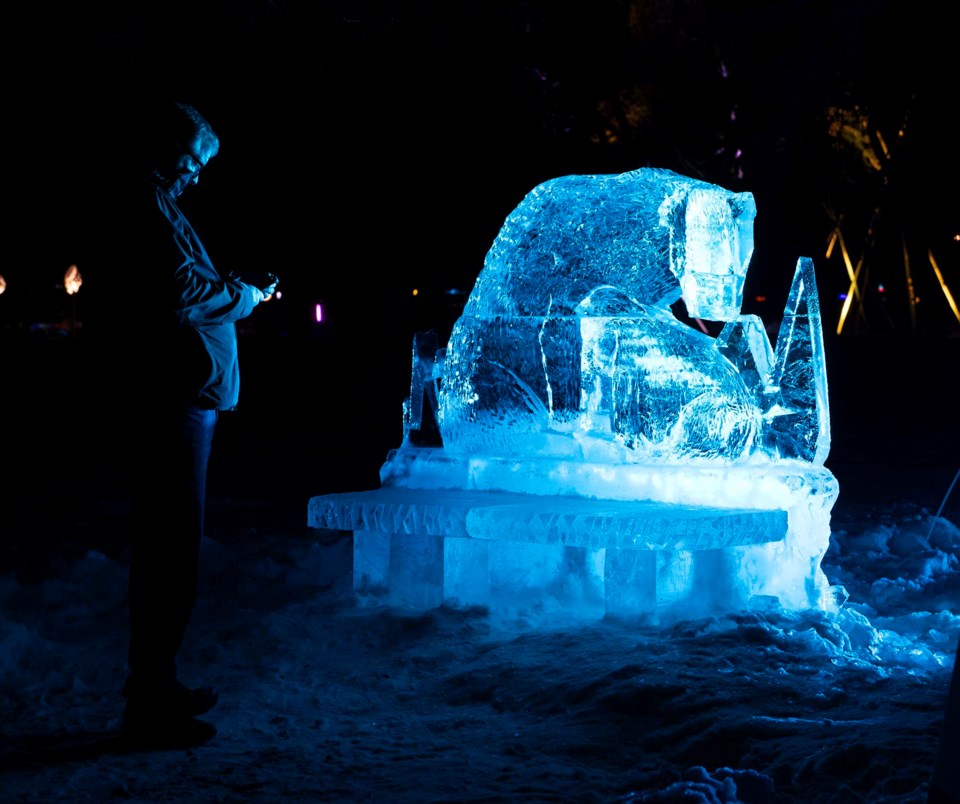Global heating could mean fewer ice jams and less water in the Sturgeon, a panellist at an upcoming science centre talk says.
Around 60 people are expected to be at the Telus World of Science Edmonton Nov. 27 for panel discussion called Frozen World: Ice, Sustainability, and Society.
The science centre is holding this talk at the request of the University of Alberta to highlight the many researchers it has studying ice and climate change, said staff scientist Cate Collins. Telus World of Science staff scheduled the talk to coincide with the Our Climate Quest exhibit now on display in the science centre.
“We’re seeing the climate warming,” Collins said, especially in the Arctic, and that has implications for people around the world.
Collins said this paid talk will consist of a panel discussion on ice and global heating with six researchers from the U of A plus a tour of the science centre’s Arctic Journey exhibit (which showcases the impacts of climate change on the Arctic).
No ice, not nice
Human activities have already warmed Earth by about 1.1 C above the 1850-1900 average, putting billions at greater risk from extreme weather, the Intergovernmental Panel on Climate Change reports. Without deep, rapid, and sustained reductions in greenhouse gas emissions, total warming is expected to reach at least 1.5 C above preindustrial levels by 2040, with every bit of warming making climate risks worse.
St. Albert is projected to warm by 4.2 C by the 2060s due to global heating, the city’s climate adaptation plan reports. This will mean a 700 per cent increase in heat waves and an 86 per cent drop in -30 C or lower days, and less snow and ice for winter recreation.
“Anything that relies on cold temperatures like outdoor hockey rinks are going to have a more and more challenges,” said U of A civil and environmental engineering professor and panel participant Jennifer Nafziger.
Warmer winters and more winter thaws will mean less snowpack for outdoor skiers and more melted rinks for hockey players, Nafziger said. More heat will also mean less ice cover and more evaporation from lakes upstream of St. Albert, meaning less flow in the Sturgeon.
How warming will affect the risk of ice jams on the Sturgeon is less clear, said Nafziger, who studies ice jams. Some studies suggest St. Albert could get more snow in the future, which would mean more spring meltwater and greater odds of an ice jam. But warmer winters also mean thinner ice, which would be less prone to jam.
Duane Froese, an earth and atmospheric scientist at the U of A, will speak about permafrost and the Arctic during the panel.
“The Arctic is warming at four to five times the rate of the rest of the world,” Froese noted — a consequence of white, reflective ice and snow melting to reveal dark, heat-absorbing ocean and dirt.
That’s warming is causing the permafrost that underlies about half of Canada to melt, resulting in Arctic highways getting potholes that were five metres deep, Froese said. Warming has contributed to bigger, more frequent forest fires that scour the land of insulating vegetation, causing the ground to thaw 20-to-30 years faster than predicted. The heat has also melted sea ice and made the seas rougher, worsening coastal erosion. Tuktoyaktuk residents were spending millions to re-engineer their shores as a result, and face the prospect of having to move their entire community inland in a few decades.
“There are really no doubters of climate change in northern Canada,” Froese said.
“There’s just so many effects that are taking place.”
Frozen World runs from 5:30 to 8:00 p.m. Nov. 27 at the science centre. Tickets are $10 to $15. Visit telusworldofscienceedmonton.ca for details.




